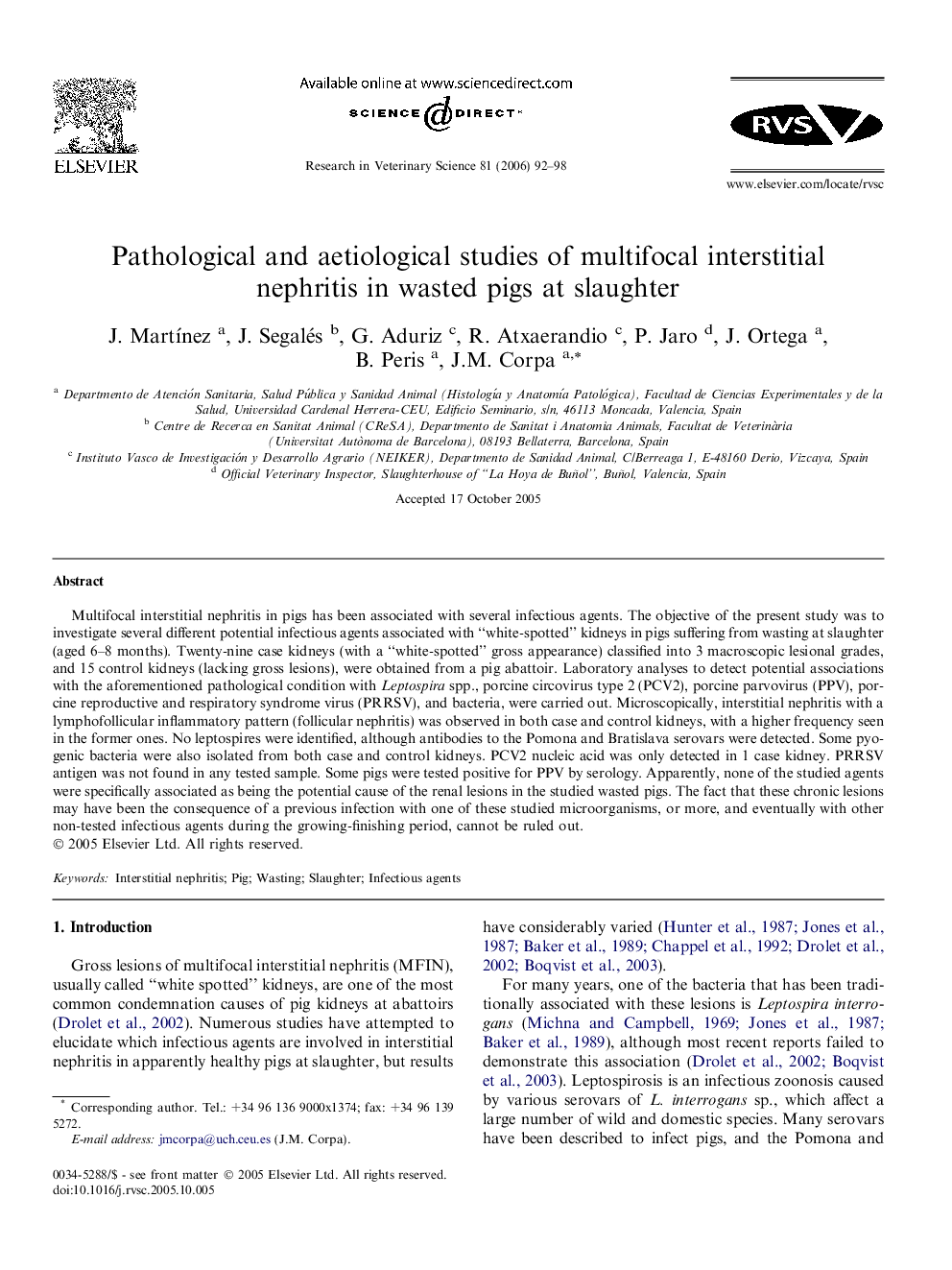| Article ID | Journal | Published Year | Pages | File Type |
|---|---|---|---|---|
| 2456484 | Research in Veterinary Science | 2006 | 7 Pages |
Multifocal interstitial nephritis in pigs has been associated with several infectious agents. The objective of the present study was to investigate several different potential infectious agents associated with “white-spotted” kidneys in pigs suffering from wasting at slaughter (aged 6–8 months). Twenty-nine case kidneys (with a “white-spotted” gross appearance) classified into 3 macroscopic lesional grades, and 15 control kidneys (lacking gross lesions), were obtained from a pig abattoir. Laboratory analyses to detect potential associations with the aforementioned pathological condition with Leptospira spp., porcine circovirus type 2 (PCV2), porcine parvovirus (PPV), porcine reproductive and respiratory syndrome virus (PRRSV), and bacteria, were carried out. Microscopically, interstitial nephritis with a lymphofollicular inflammatory pattern (follicular nephritis) was observed in both case and control kidneys, with a higher frequency seen in the former ones. No leptospires were identified, although antibodies to the Pomona and Bratislava serovars were detected. Some pyogenic bacteria were also isolated from both case and control kidneys. PCV2 nucleic acid was only detected in 1 case kidney. PRRSV antigen was not found in any tested sample. Some pigs were tested positive for PPV by serology. Apparently, none of the studied agents were specifically associated as being the potential cause of the renal lesions in the studied wasted pigs. The fact that these chronic lesions may have been the consequence of a previous infection with one of these studied microorganisms, or more, and eventually with other non-tested infectious agents during the growing-finishing period, cannot be ruled out.
